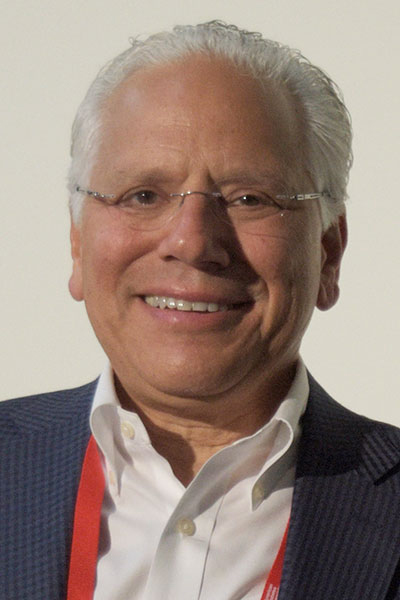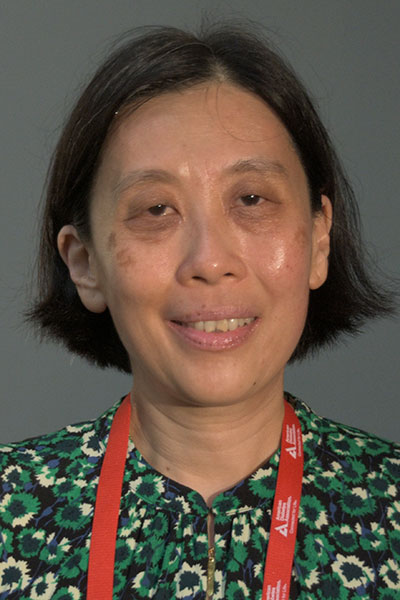
Multiple nutrient-stimulated hormones are used to manage physiological control of metabolism, and chronic diseases in the elderly have been managed with multiple medications for decades. Four opinion leaders provided insight into combinations that may get less attention than those currently in the spotlight in Nutrient-Stimulated Hormones—Anti-Obesity Pharmacotherapy Game Changers.
“What we’ve now come to realize is that we can integrate these various hormones into single molecules or select combinations to achieve better outcomes,” said Richard DiMarchi, PhD, Distinguished Professor of Chemistry, Indiana University. “It really is a victory for the community gathered here.”
Dr. DiMarchi co-chaired the session with Jenny Tong, MD, MPH, Associate Professor of Medicine, VA Puget Sound Health Care System. The session can be viewed by registered meeting participants at ADA2023.org. If you haven’t registered for the 83rd Scientific Sessions, register today to access the valuable meeting content through August 28.
Contribution of gastric inhibitory peptide and glucagon in dual and triple agonism

Campbell, PhD
Jonathan Campbell, PhD, Associate Professor in the Department of Medicine at Duke University, addressed the contribution of glucose-dependent insulinotropic polypeptide (GIP) and glucagon-like peptide-1 (GLP-1) in dual and triple agonism.
He introduced the two incretins, which are major regulators of metabolism, including regulation of food intake and increasing insulin secretion. Tirzepatide is the first multi-receptor agonist in clinic and received U.S. Food and Drug Administration (FDA) approval for treatment of type 2 diabetes in 2022.
“The question is, how does GIP potentially add to GLP-1?” Dr. Campbell posed. One hypothesis has emerged with tirzepatide.
“It’s that GIP doesn’t really do anything, and it’s just another super GLP-1 receptor agonist that has made its way through the evolution,” Dr. Campbell said.
Knocking out GIP receptor signaling in mice did not impact glucose lowering in response to tirzepatide, and knocking out GLP-1 receptor signaling in mice also prevented tirzepatide from lowering glucose.
Dr. Campbell also discussed studies using human islet cells. When the GIP receptor was blocked, it wiped out tirzepatide’s activity in the human donor.
“So now the story has flip-flopped, and it looks like tirzepatide is working almost exclusively through the GIP receptor in human beta-cells,” he said.
In fact, antagonizing the GIP receptor consistently decreased tirzepatide-stimulated insulin secretion in human islets. The GLP-1 receptor had an inconsistent impact, which may be due to donor variability, he reported. Dr. Campbell noted that tirzepatide has reduced potency at the mouse GIP receptor compared to the human GIP receptor.
The overall conclusion was that tirzepatide is not a super GLP-1 receptor agonist.
“It clearly has activity at the GIP receptor. It is a multi-receptor agonist, and whatever it’s doing at the GIP receptor is going to be exciting as we find out more in the next few years,” he said.
Role for amylin in monotherapy and combination therapy

David C.W. Lau, MD, PhD, FRCPC, FTOS, Professor Emeritus in the Departments of Medicine, Biochemistry, and Molecular Biology at the University of Calgary, Alberta, Canada, transitioned to amylin agonism to address the role of amylin in monotherapy and combination therapy.
Obesity is a prevalent, complex, chronic, relapsing disease characterized by excessive or abnormal adiposity that impairs health and leads to complications. Weight loss improves obesity-related complications.
Amylin, a neuroendocrine peptide hormone, counts among its major functions glucagon-release suppression and food-intake inhibition. Dr. Lau outlined how long-acting amylin analogues demonstrate weight loss through central appetite regulation and are under development for obesity and diabetes management.
The first amylin analogue was pramlintide, which was developed for type 1 and type 2 diabetes as an adjunct to insulin therapy but also showed weight loss properties and was considered for treatment of obesity.
Dr. Lau provided data from a phase 2 dose-response trial of the analog cagrilintide, which also showed promising weight loss properties.
“This led to consideration of combination therapy with semaglutide, which has major effect centrally on appetite regulation and promotion of satiety, with the idea that cagrilintide may act in different regions of the brain,” Dr. Lau said.
Subsequent studies led to a recent 32-week multicenter, double-blind phase 2 trial of once weekly CagriSema, semaglutide, or cagrilintide.
“The combination did not have much additional improvement in glucose control, but the weight loss was spectacular in that it appears there may be a synergistic effect of CagriSema,” he said.
CagriSema has moved into phase 3 trials called REDEFINE.
“Future weight loss medicines are expected to lead to greater weight loss in the neighborhood of 20%-30%, which is comparable to that achieved with sleeve gastrectomy,” Dr. Lau said.
Contribution of PYY in combination treatment with GLP-1

Tricia M. Tan, BSc, MB, ChB, FRCP, PhD, FRCPath, Professor of Metabolic Medicine and Endocrinology at Imperial College London, United Kingdom, looked at peptide YY (PYY), another gut hormone that may fill a space for obesity treatment.
PYY and GLP-1 were discovered in the 1980s, but GLP-1 studies were accelerated when it was used to treat diabetes. There are two forms of PYY: PYY 1-36 and PYY 3-36. The two have different physiological effects, and Dr. Tan focused on the latter. Her lab has studied the combination of GLP-1 with PYY 3-36 to show their synergistic effects on food intake using methods such as brain imaging and a tripeptide combination infused with a pump.
“We were able to show that GLP-1 continues to have its expected insulinotropic effect, but there were no effects of PYY 3-36 on insulin secretion,” Dr. Tan said. There were also no differences in the estimated insulin sensitivity.
PYY 3-36 was developed for treatment of obesity as a nasal spray, but it had a high dropout rate because of adverse side effects. The hormone has a narrow therapeutic range, which also created a challenge.
There are six PYY 3-36 treatments actively being developed, including two trials that are looking at PYY 3-36 in combination with existing GLP-1 receptor agonists.
Dr. Tan said she anticipates PYY 3-36 will move forward with a dual peptide approach, and treatment using the PYY 1-36 analogue could be a possibility.
Clinical implications of nutrient-stimulated hormone pharmacotherapy

MD, PhD
Ania M. Jastreboff, MD, PhD, is an Associate Professor of Endocrinology at Yale University School of Medicine and Director of the Yale Obesity Research Center. She addressed the clinical implications of nutrient-stimulated hormone pharmacotherapy and the future of obesity treatment.
The discovery of insulin was a pivotal moment in medicine, and the recent introduction of highly effective anti-obesity medications has created another one, Dr. Jastreboff noted.
“We are in a place where we can start to effectively treat one disease that potentially causes or contributes to 200 other weight-related diseases,” she said.
Several studies demonstrate the benefits of these therapies. In the STEP-1 study of semaglutide 2.4, participants showed improvements in many cardiometabolic measures. In the soon-to-be-completed SELECT CVOT study of 17,000 individuals with obesity without type 2 diabetes, investigators are hoping to find out whether semaglutide 2.4 can help decrease secondary cardiovascular events. Results are expected this fall.
The SURMOUNT-1 trial studied tirzepatide, which showed a 22.5% average weight reduction at 72 weeks. The SURMOUNT-2 tirzepatide trial, the results of which were unveiled at the 83rd Scientific Sessions, included individuals who had type 2 diabetes. The average weight reduction was 15.7%. Dr. Jastreboff also looked at other agents, including survodutide, which showed weight reduction results as well.
“Do you see a common theme here?” Dr. Jastreboff asked. “These are extremely impressive weight reduction results with all of these agents.”
Ultimately, weight loss is only part of the solution. Treating obesity should be the objective, she said. “We need to target the neurometabolic pathophysiology of obesity, as well as the different mechanisms,” she said, “because there are different types of obesity.”

